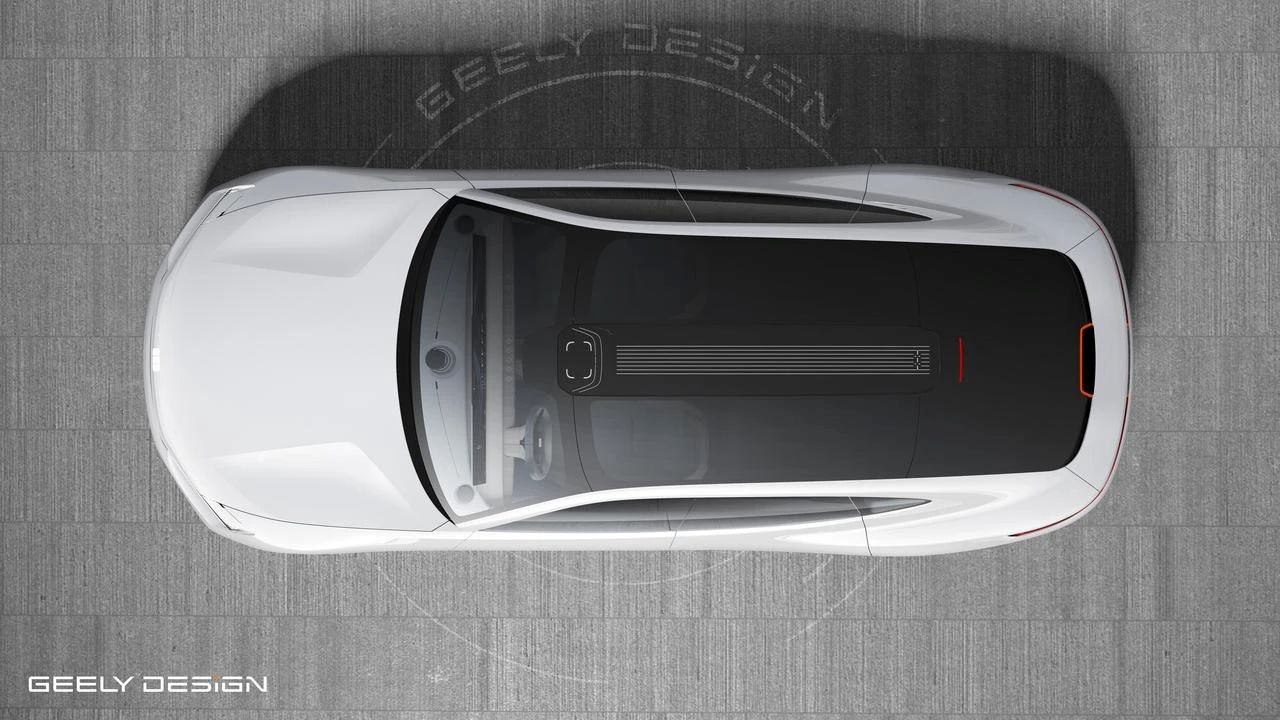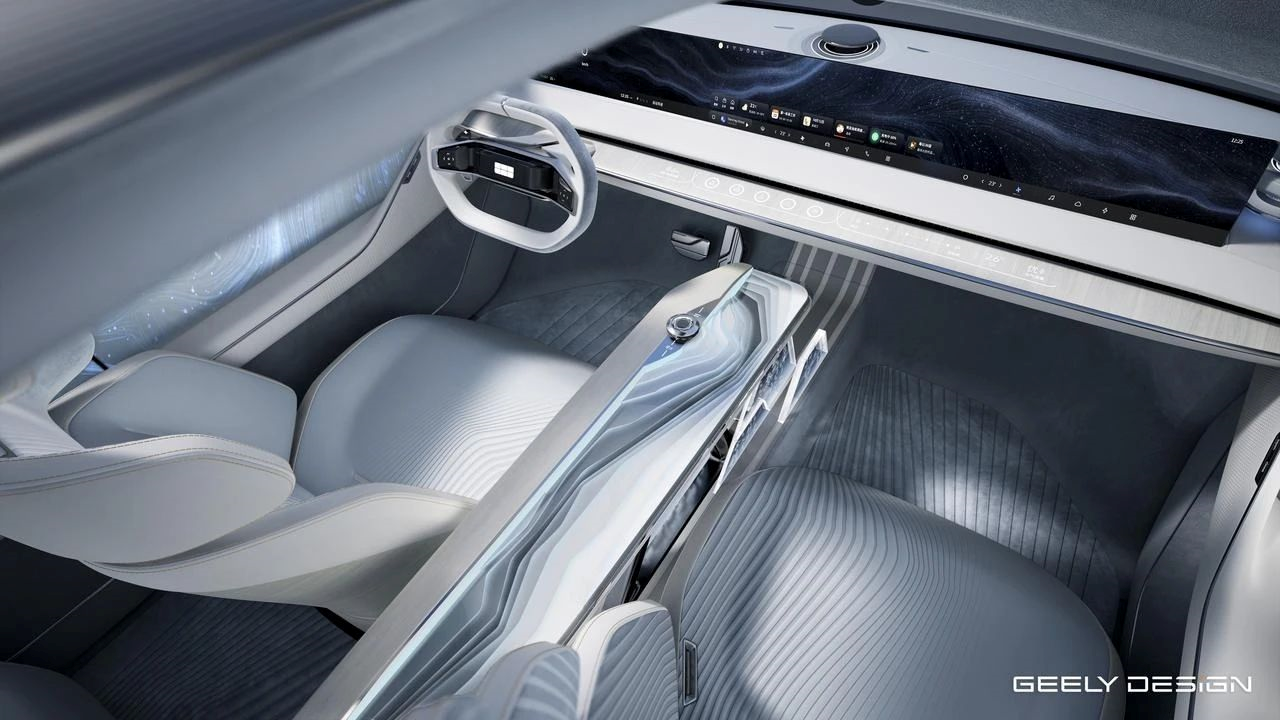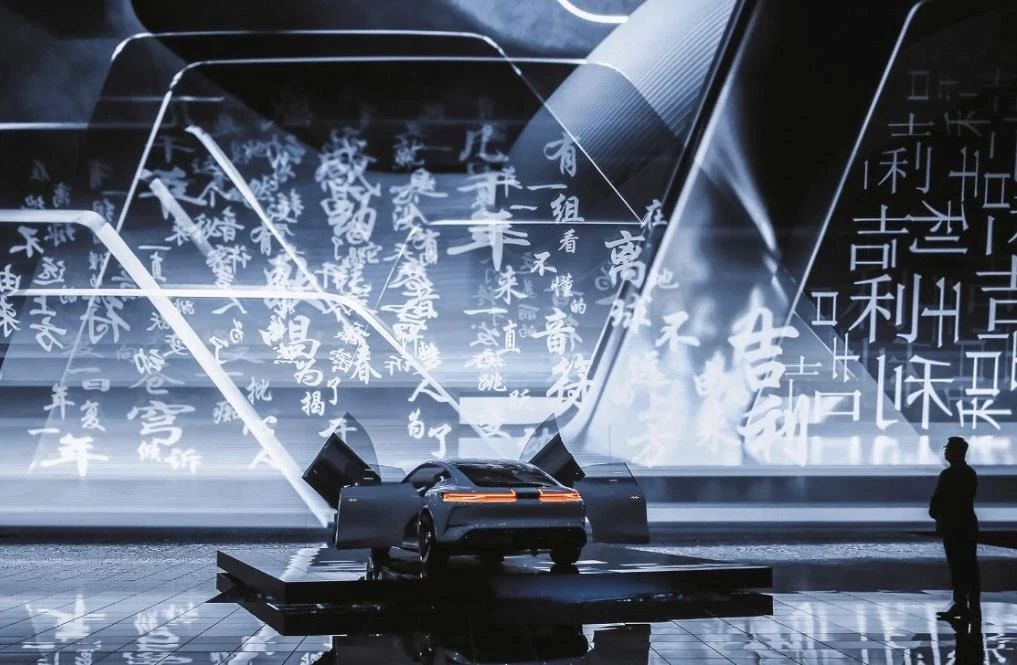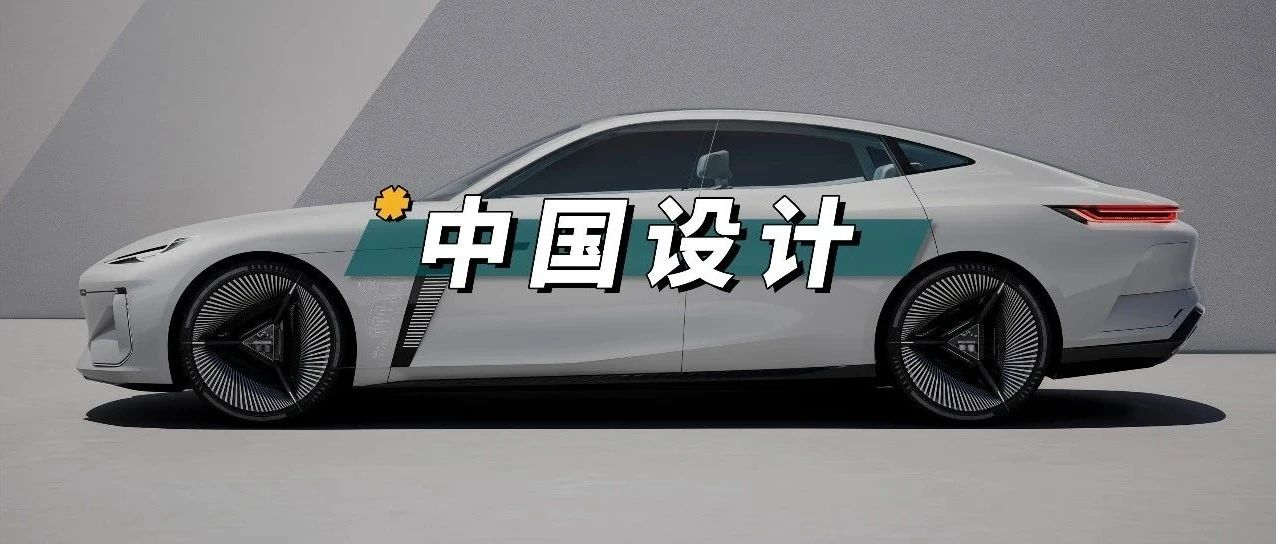The prototype car of the Geely Galaxy series, “Galaxy Light,” unveiled at last night’s press conference, met all our expectations for a large, wide-bodied coupe with its sleek front end, elongated roofline, and low-slung stance.

However, unlike the large, wide-bodied coupes we are familiar with, such as the Porsche Panamera and Mercedes CLS, the Galaxy Light is a purely Chinese-designed electric coupe. In this article, we will talk about the exquisite design of this car.
Unlike other Chinese brands that outsource their design work to foreign designers, this car comes from Chinese designers.
The Galaxy Light is the latest work of Chen Zheng, vice-president of the Geely Automotive Group. He is in charge of Geely’s design business and is the first Chinese global automotive design vice-president in mainstream car companies, breaking the history of only foreigners serving as vice-president of design for Chinese independent car brands.

Chen Zheng has been in the automotive design industry for 21 years, including 15 years in Europe. Several models produced under his leadership are still selling well.
How does the Geely Galaxy Light reflect his “learning from the west and integrating the best of both worlds”?
A Balance of Addition and Subtraction
▎As advanced driver assistance technology advances, more and more sensors are being added to cars. While these sensors can reduce driving fatigue and improve safety, they are also becoming a headache for automotive designers.
For example, this is a NIO ES8. If you focus on the air intake grille below the NIO logo on the X-Bar, you will notice that the parallel air intake trim below the logo is divided. This is because NIO engineers have arranged 360-degree surveillance cameras and millimeter-wave radar here to assist with driving.
 The designer has tried hard to weaken this detachment by using the same color and material, but once noticed, these sensors obviously destroy the consistency of the design.
The designer has tried hard to weaken this detachment by using the same color and material, but once noticed, these sensors obviously destroy the consistency of the design.
By 2022, design needs to further “deteriorate” towards functional compromises. Let’s continue to take a look at the NIO ES7 – in fact, the laser radar and camera are standard on all models of the NIO NT2.0 platform, as indicated by these three packages on the roof.

If we look at other industries, examples of design compromising towards functionality abound, such as the iPhone’s notch and the popularity of steel-reinforced concrete and large windows in architectural design style since the 1970s Chicago fire.
Returning to the automobile industry, we must point out that compromising design for functionality in sensor placement is a common practice in the industry today, but NIO has not solved it very well.
For example, the ideal version of the Max also has a small package on the front, and the top-of-the-line assisted driving package for the IM LS7 has three large packages that cannot be ignored.
Is there a better solution? Hycan has brought his solution – integrated design.
Below the logo on the front face, Hycan integrates the camera, millimeter-wave radar, and an interactive information display panel that can interact with the outside of car.
If the information display panel of other brands on the headlight is regarded as a galaxy, Hycan’s information display panel is enough to be called a milky way.

On the side, Hycan integrates air curtain covers, streaming media rearview mirrors, hidden door handles, side sentry mode cameras, NFC unlocking areas, charging ports, outdoor power and lighting tools.
As we can see, because integrated design can balance design consistency and product functionality well, in addition to the existing door handles, charging ports and NFC unlocking, Chen Zheng and his team also tried to add features such as Geely drones to explore the upper limit of this design style.The integrated design of the Galaxy Light prototype may not be completely retained in the mass production version, but this does not prevent us from experiencing the value of integrated design based on the current prototype.

From the roof to the tail, Galaxy Light integrates new functions such as LiDAR, high-level brake light, cameras, and drone modules to form a “string canopy”.
As can be seen, the LiDAR at the front of the car is fully integrated into the body while ensuring aesthetics. This may also be one of the factors that reduce the drag coefficient of Galaxy Light to as low as 0.19.

It should be pointed out that the technical capabilities required behind the integrated design are more difficult than they appear. As Chen Zheng said in an interview yesterday, the design of Galaxy L7 is supported by Geely’s system engineering, system, and architecture, which is a very comprehensive ability.
For example, the front face panel integrates cameras, millimeter wave radar, and an information display panel that can interact with the outside of the car at the same time, and the air intake grille is also significantly narrowed. In addition to miniaturizing and lightweighting various sensors and components for high integration, the Thunder God electric drive needs to be more efficient to reduce the demand for ventilation and heat dissipation to better adapt to the iteration of the front face shape.
As more and more sensors and other devices are added to cars, we will eventually see some sort of “rearrangement” when designers can no longer bear the weight of their designs. The integrated design demonstrated by Galaxy Light is a good direction to explore.
Chinese Elements?
At yesterday’s press conference, we all saw the landscape and calligraphy elements presented by Galaxy Light. Considering that the invention of the car in the 18th century was a typical imported product for China, combining Chinese traditional culture with car design is undoubtedly a challenge.
So far, the brand that has gone the furthest in this direction is BYD.
Taking the Dynasty series as an example, the Chinese ancient dynasties Qin, Tang, Song, and Yuan are used as model names, and the “Dragon Face” front and “Chinese Knot” tail lights are all benchmarks of the combination of Chinese traditional cultural elements and car design.### Going back to Geely
Speaking of Geely, as a Chinese independent auto brand, it is similar to BYD and still one of the most comprehensive new energy powertrain solutions in the world. Geely has adopted traditional Chinese culture to further integrate design when starting comprehensive electrification, which is not surprising.
Confucius said, “The wise find pleasure in water; the virtuous find pleasure in hills.” “Ripple” is a taste of water and once was also Geely’s design symbol.
Now, the front grille is gone, and the “ripple” returns in the form of optoelectronics on the galaxy light, which is perfectly suited to the functional attributes of the interactive information display panel itself.
On the headlights, the Galaxy light incorporates elements of “flying eaves” and “vigilant tiger” from Chinese culture. If you think this is a designer’s far-fetched idea, take a look at the side of the front of the car, and did you notice the profile of an old tiger?
In the taillights section, you can still see the design inspired by the eaves of traditional Chinese architecture, adding a touch of design flair to the sleek tail lights.
Moving inside the car, the three major functions of suspended speakers, fragrances, and ambient lights are integrated, which is called the “Three ponds reflecting the moon”.
The central armrest box is inspired by the West Lake shoreline with continuous light and shadow, and rippling water, called the “West Lake shoreline”.“`

The central armrest box is like the ups and downs of hills in West Lake, with poetry by Li Shufu, founder of Geely, carved on it – this is known as Book Mountain and Piled Peaks.

The galaxy scroll on the left and right door panels, combined with light blue leather and carpet, creates an atmosphere of galaxy and West Lake.

As Chen Zheng said, in the design of Chinese cultural symbols, many superficial things are used, while it is not easy to apply truly emotional, artistic and romantic Chinese design to car design. It is difficult to say what kind of market feedback the exploration of the integration of Chinese traditional culture and car design will receive before the launch of the Geely Star of the Galaxy. But I think Geely has made some bold attempts.

Conclusion
My main interest from yesterday’s launch event centered on the Geely Galaxy prototype.

As the Geely Galaxy prototype, the design of the Galaxy Star has a certain level of scalability and flexibility. The ripple aesthetics and main design features it defined will gradually be applied to various mass-produced products of the Galaxy series.
Many characteristics embodied in the design of this car indicate the future design direction of the Geely Galaxy, which I think is worth our attention.
# 这是一个标题
这是一段普通的文本,中间包含有一些 `<em>` 标签,和一些 `<strong>` 标签。
下面是一张图片:
<img src="https://picsum.photos/200/300" alt="随机图片">
接下来是一个列表:
- 列表项1
- 列表项2
- 列表项3
再来一段文本,包含有一个链接:[百度](https://www.baidu.com/)
最后是一段代码:
python
print(“这是一段 Python 代码”)
## 这是另一个标题
> 这是一段引用文本。
**粗体**和*斜体*的有着不同的文字风格。
### 这是一个子标题
1. 编号列表1
2. 编号列表2
3. 编号列表3
## This is a title
This is a paragraph with some `<em>` tags and `<strong>` tags.
Below is an image:
<img src="https://picsum.photos/200/300" alt="Random image">
Following is a list:
- Item 1
- Item 2
- Item 3
A paragraph with a [link](https://www.baidu.com/).
And finally, a code block:
python
print(“This is a Python code block”)
“`
This is a subheading
A numbered list:
- Numbered item 1
- Numbered item 2
- Numbered item 3
This article is a translation by ChatGPT of a Chinese report from 42HOW. If you have any questions about it, please email bd@42how.com.
